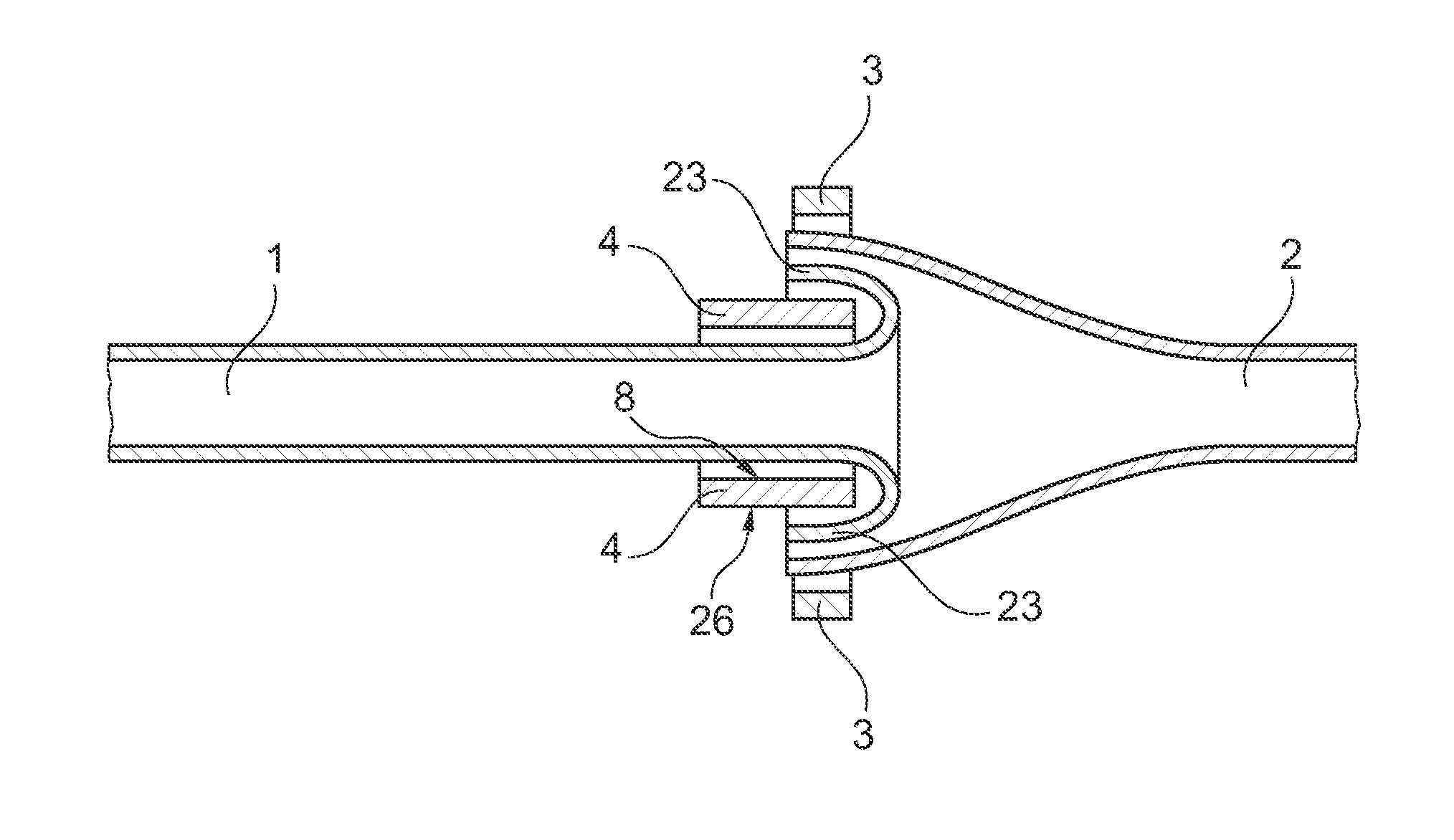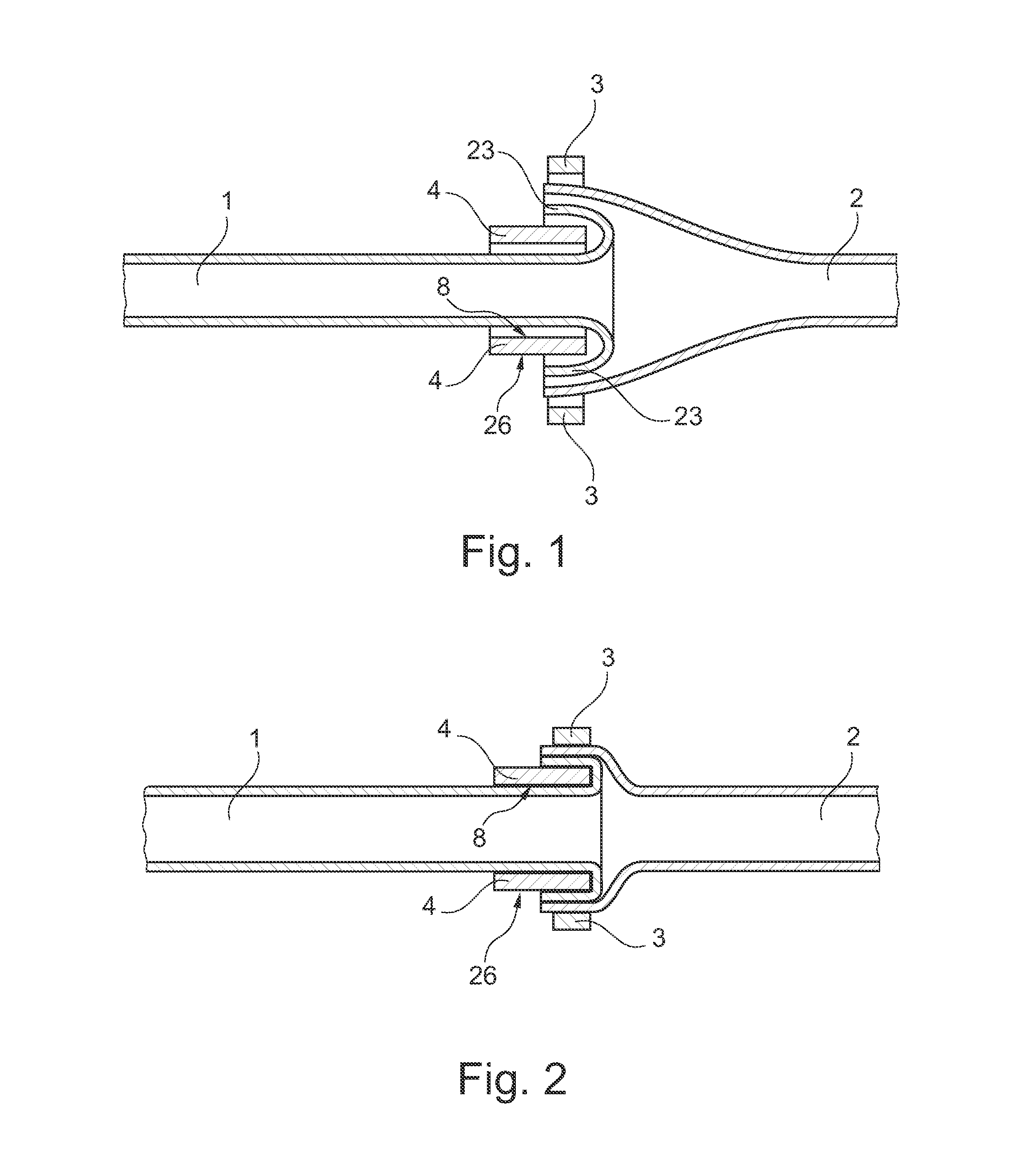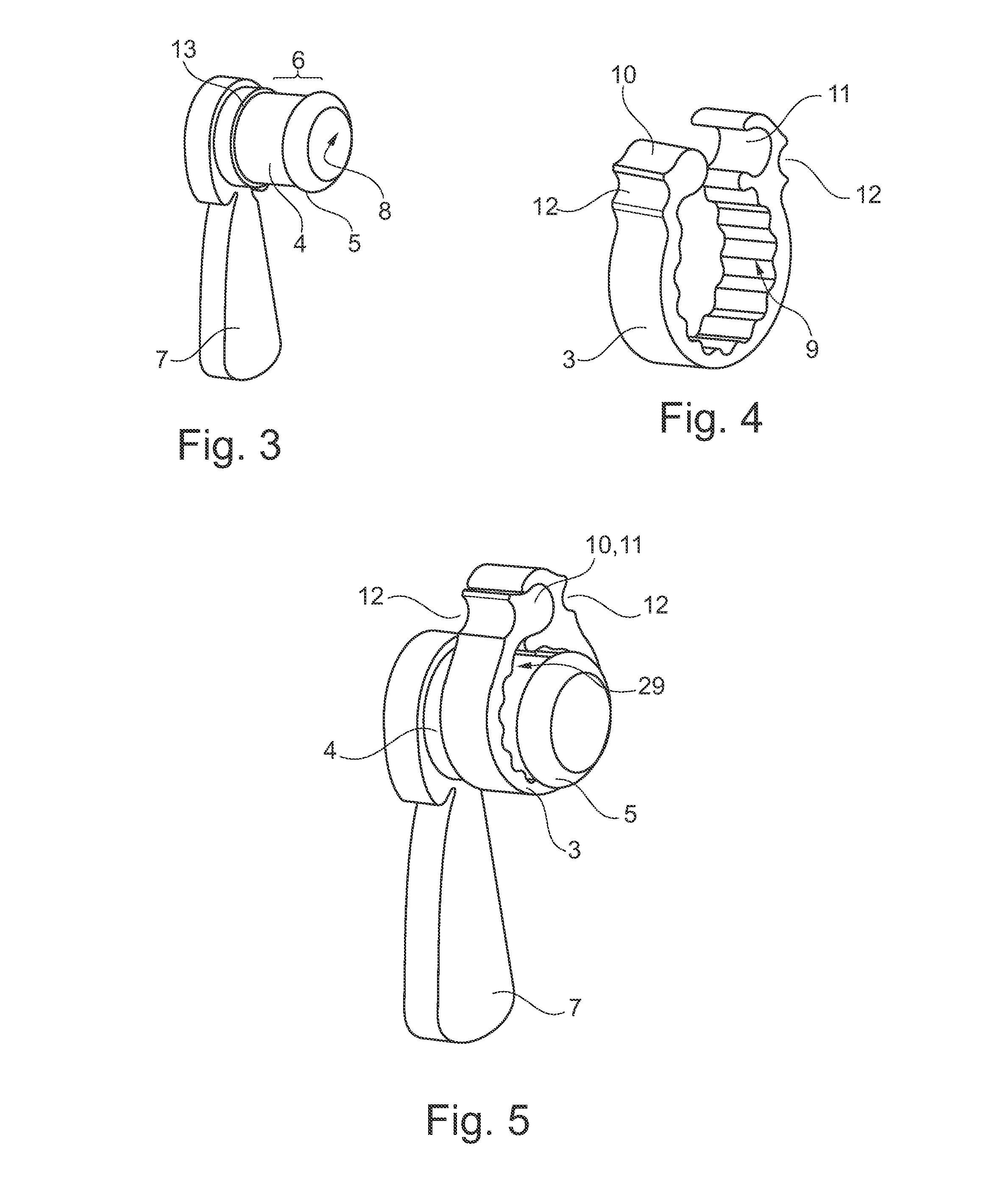Medical device
- Summary
- Abstract
- Description
- Claims
- Application Information
AI Technical Summary
Benefits of technology
Problems solved by technology
Method used
Image
Examples
Embodiment Construction
[0048]FIGS. 1 and 2 show in schematic form, the interoperational functionality of an external tubular scaffold 4 and a clip 3 when used to anastomose a first tubular organ 1, such as a blood vessel, in end-to-end fashion with a second tubular organ 2, such as another blood vessel.
[0049]In FIG. 1, the first tubular organ 1 has been threaded through the external tubular scaffold 4, such that an inner tubular surface 8 of the external tubular scaffold 4 is adjacent to the exterior surface of the wall of the first tubular organ 1. A cuff portion 23 of the first tubular organ 1, formed by folding the first tubular organ 1 back over itself, has been placed concentrically around an exterior surface 26 of the external scaffold structure 4 and a second tubular organ 2 has been placed concentrically around the cuff portion 23. An open clip 3 has been placed concentrically around the second tubular organ 2 and the cuff portion 23 and the exterior surface 26 of the external tubular scaffold 4.
[...
PUM
 Login to View More
Login to View More Abstract
Description
Claims
Application Information
 Login to View More
Login to View More - R&D
- Intellectual Property
- Life Sciences
- Materials
- Tech Scout
- Unparalleled Data Quality
- Higher Quality Content
- 60% Fewer Hallucinations
Browse by: Latest US Patents, China's latest patents, Technical Efficacy Thesaurus, Application Domain, Technology Topic, Popular Technical Reports.
© 2025 PatSnap. All rights reserved.Legal|Privacy policy|Modern Slavery Act Transparency Statement|Sitemap|About US| Contact US: help@patsnap.com



